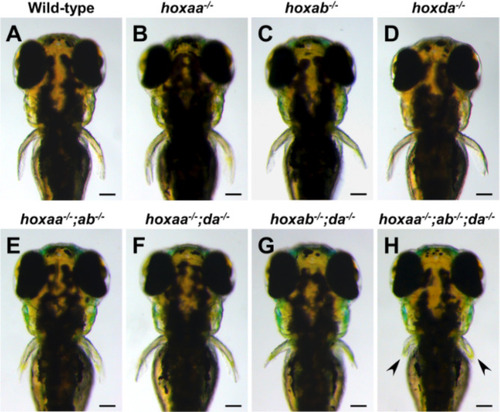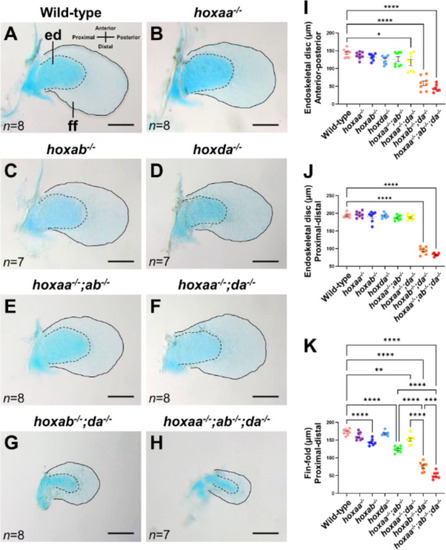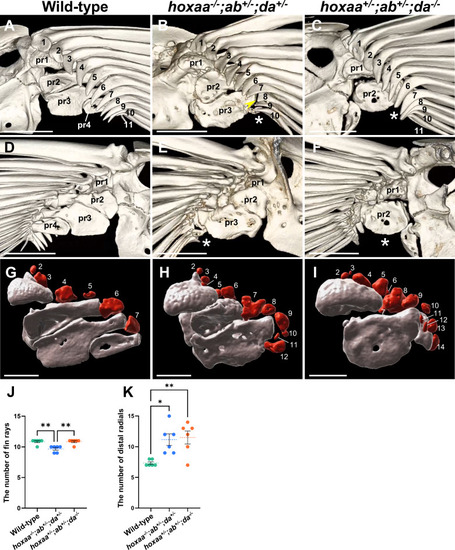- Title
-
The functional roles of zebrafish HoxA- and HoxD-related clusters in the pectoral fin development
- Authors
- Ishizaka, M., Maeno, A., Nakazawa, H., Fujii, R., Oikawa, S., Tani, T., Kanno, H., Koita, R., Kawamura, A.
- Source
- Full text @ Sci. Rep.
|
Shortening of pectoral fins in |
|
Shortening of the endoskeletal disc and fin-fold of the pectoral fins in |
|
Expression of |
|
Skeletal elements in the posterior regions of the pectoral fin are preferentially affected in |




